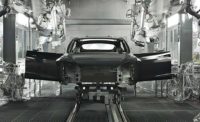Converging causes contribute to most incidents
Seldom is there a sole culprit

Credit: Michael Valdez / iStock / Getty Images Plus
MQ-9 Reaper Drone flies training mission over Creech Air Force Base in Indian Springs, Nevada.
Lack of situational awareness.
Poor communication.
Unfamiliarity with new equipment.
Noise drowning out warnings.
Poor lighting.
Pressure to get the job done.
Incomplete pre-start briefing.
Inadequate training.
A recipe for a potential serious injury or fatality, yes? In fact, all these factors were intertwined on the evening of September 7, 2023, fatally injuring a civilian contractor working at the Gray Butte Airfield in Southern California. The private airfield’s primary use is the development and testing of Unmanned Aeiral Vehicles for the U.S Military.
That evening a ground test was being conducted by civilian contractors and Air Force personnel on the “Reaper” or the MQ-9A. The aircraft is remotely piloted and has a turboprop engine, a wing span of 66 feet, and a length of 36 feet. It has been employed by the U.S. Air Force since the early 2000s primarily against dynamic execution targets and intelligence collection, according to the U.S. Air Force investigative report of the incident.
A lone worker put at risk
The incident could be considered a case of lone worker safety gone horribly wrong. A relatively new contractor still in training was working alone with a power meter she had never seen or used before. She was not provided with communications equipment, leaving her with no direct contact with the ground test team. The test was conducted with the drone’s engine running; the report says no instruction was given on the proper procedures to approach a running aircraft. The spinning propeller could not be seen when the contractor approached from the tail of the aircraft, according to a simulation conducted after the incident. Her head was looking down at the device and she could not hear above the noise or see the shouting and waving of coworkers trying to get her attention when she walked into the rotating propeller.
I don’t want to get into the technicalities of the ground test or the individuals involved that night. This article is not about the air base tragedy, which made national news. The focus here is how a serious incident or fatality is seldom due to a single cause.
More than human error
How many of you have been involved in an incident in which a worker, new and unfamiliar with the equipment, was so fixated on mastering the job that he or she didn’t see the edge of the roof, or the oncoming forklift, or the excavation trench, or any number of hazards? Did you conclude this was simply human error? Probably not. But in many workplaces, this would be the obvious and easiest explanation — especially if there was no safety and health specialist on staff.
No putzing around
How many of you have analyzed incidents where delays in the work had the walls echoing with supervisors stressing, “C’mon guys, the quicker you get this done the faster we get out of here.” Or “This is not the time to putz around.” Or “Let’s get this show on the road. This is not the time to delay.” These words come straight from the Air Force report. If this “get ‘er done” push was evident in your workplace, would anyone higher up take accountability for putting the pressure on? Especially if the outcome was fatal? Accountability is often elusive when things go wrong.
How many incident analyses have you completed where environmental factors played a role? Was the stairwell properly lit? Did lighting cast shadows that obscured hazards? Were noise and vibration levels bone rattling high, creating distractions and isolating workers without communication means? Hearing protection is necessary for noise reduction, but PPE alone is not the answer to other environmental risks such as poor lighting, sloppy housekeeping or bad weather.
Dangerous assumptions
How many times in workplaces are new employees rushed into jobs to fill vacancies or meet high demands or deadlines — without any prior experience and incomplete, or even non-existent training? Are their names even known? Do coworkers simply assume, as in the air base tragedy, that someone they don’t know, performing a role they don’t understand, knows what they are doing? Assumptions are dangerous and can possibly block life-saving interventions.
Pre-shift huddles or briefings are common in many workplaces. Conducted every day, they can become a repetitious yawner. Attention wanders and discussions become shorter and incomplete. Key safety issues and requirements can be left out, especially if time is a factor. The pre-test mission briefing before the air base ground test listed 24 items that should have been covered. Witnesses said most of those items were omitted. Test crew identification, assignment and duties were not covered, according to the Air Force report. Assignments and responsibilities were not spelled out; there was no mention of emergency procedures or danger zones to avoid.
Just as there is rarely a singular cause of an incident, seldom is one person responsible for an incident occurring. That makes the blame game played in some workplaces more difficult. But it is a collection of oversights, mistakes, decisions, assumptions, and choices made by a variety of individuals at different levels in the operation – a chain reaction of forced and unforced errors — that most often precede a serious injury or fatal outcome.
Much more goes into keeping people out of harm’s way than many workplaces are aware of or acknowledge — especially if safety and health expertise is not present. Safety may seem simple to the uninitiated: follow and enforce the rules, police the workplace. But a confluence of risks and hazards makes preventing serious injuries and fatalities much more challenging.
Looking for a reprint of this article?
From high-res PDFs to custom plaques, order your copy today!









